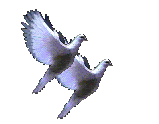 To read an original poem entitled Watch Night, click here.
To read an original poem entitled Watch Night, click here.
WATCH NIGHT
If you live or grew up in a Black community in the United States, you have probably heard of "Watch Night Services,"
the gathering of the faithful in church on New Year's Eve. The service usually begins anywhere from 7 p.m. to 10 p.m.
and ends at midnight with the entrance of the New Year. Some folks come to church first, before going to out to celebrate.
For
others,
church is the only New Year's Eve event.
Like many others, I always assumed that Watch Night was a fairly standard Christian
religious service -- made a bit more Afrocentric because that's what
happens when elements of Christianity become linked with the Black Church.
Still, it seemed that predominately White Christian churches did not
include Watch Night services on their calendars, but focused instead on Christmas
Eve programs. In fact, there were instances where clergy in Mainline denominations
wondered aloud about the propriety of linking religious services with a secular
holiday like New Year's Eve.
However, there is a reason for the importance of New Year's Eve services in African American
congregations. The Watch Night Services in Black communities that we
celebrate today can be traced back to gatherings on December 31, 1862, also known as
"Freedom's Eve." On that night, Americans of African descent came together in churches,
gathering places and private homes throughout the nation, anxiously awaiting news that
the Emancipation Proclamation had become law. Then, at the stroke
of midnight, it was
January 1, 1863, and according to Lincoln's promise, all slaves in the Confederate States were
legally
free. When the actual news of freedom was received later that day, there were prayers, shouts and
songs of joy as
people fell to their knees and thanked God.
Black folks have gathered in
churches annually on New Year's Eve ever since, praising God for bringing us
safely through another year. Generations have passed since that
first Freedom's Eve and many of us were never taught the African American history of Watch Night,
but our traditions still bring us together at this time every year to celebrate
once again "how we got over."

Illustration Citation:
Heard and Moseley.
Waiting for the hour [Emancipation]
December 31, 1862.
Carte de visite.
Washington, 1863.
Prints
and Photographs Division
African American
Odyssey: A Quest for Full Citizenship
The Civil War: Part 2
Library of Congress
Essay on Watch Night by Charyn D. Sutton
The Onyx Group
December 2000
Additional information on the history of Watch Night can be found in Emancipation
Proclamation by noted African American historian John Hope Franklin and Forever
Free by Dorothy Sterling (out of print).
|







